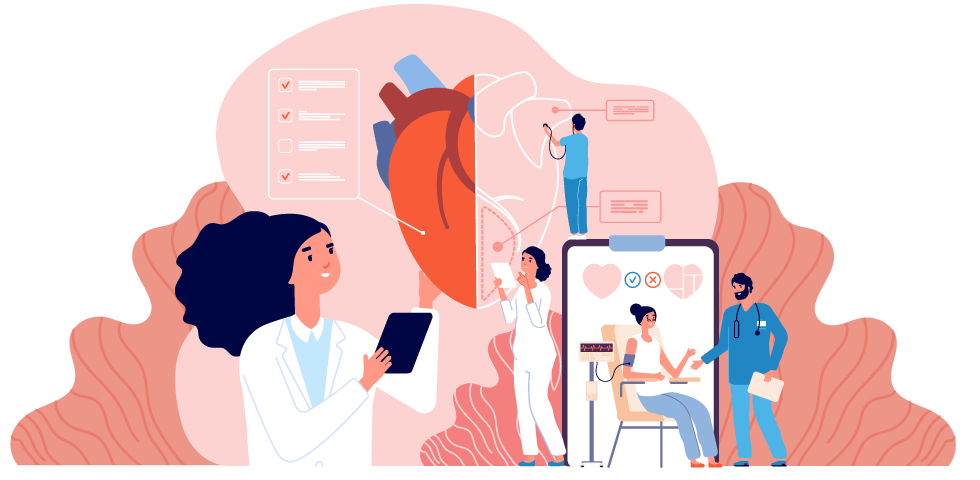When an incident prevents an individual from working, what follows is a series of events involving various entities, including employers, insurance carriers, and physicians. As the individual navigates the road before them, they will soon realize there is rarely a straight path for someone to follow when they cannot work.
Last year, we released a blog post detailing two potential paths for individuals approaching retirement age should they find themselves out of work for a significant period of time. But what about someone younger who may only be out of work for a short time – what does that look like for them? In this post, we will follow John as he navigates an injury and subsequent return to work while filing for and obtaining benefits to protect his income.
An accident on the softball field
John works as an insurance agent at Acrobat Insurance. He has been with the company for several years and enjoys his work. John’s work requires him to sit at a computer most of the day, but he doesn’t mind that as he can chat with his coworkers and walk around as he needs to. Outside of work, John enjoys playing softball in an adult league. It allows him to catch up with friends from high school while keeping him in shape. One day, John has an accident on the softball field and breaks his clavicle. At first, John is not in much pain, but as he waits for the emergency technicians to arrive, he gets increasingly more uncomfortable.
Once at the hospital, imaging and tests show the extent of the injury. The x-rays show that John fractured his clavicle in multiple places and will require surgery to begin the healing process. After discussions with physicians and surgeons, John expects to be out of work for about four months due to the extent of his injury. John should regain mobility in his fingers and hands in just a few weeks. Still, given the placement of the fractures, physicians expect wrist movement to be limited and pain to worsen with repetitive motions such as typing on a computer.
John develops a slight case of a frozen right shoulder while his clavicle is healing. The clavicle injury, which impacted both sides of his chest and arms, was worse on his right side. John is right-side dominant, so the frozen shoulder was incredibly difficult to navigate. With physical therapy and rehabilitation, John gets back to work, but he ends up being out for about eight months – quite a bit longer than expected. He starts working part-time for the first month and is gradually able to get back to full-time, about one year after his accident. John is grateful to be healthy enough to return to work, but his softball days are over. Now, he sits in the bleachers to cheer on his former teammates!
Disability and paid leave integration
With John no longer actively working, he was no longer getting his biweekly paycheck. Through his employer, John was eligible to apply for short-term disability (STD) benefits. As with 95% of STD claims, John receives an approval shortly after he applies for benefits to begin after a two-week elimination period. During the elimination period, John uses up the handful of vacation days he has left for the year, providing him with a source of income while he waits for the STD benefits to kick in.
Once the two weeks were over, John began to receive weekly STD checks for 60% of his salary. Despite the reduction in income, John is thankful to have any source of income at all. John receives notification his STD claim is approved for the maximum duration of twelve weeks. John is hopeful he can get back to work before then and won’t need to worry once the STD benefits end.
While waiting for his STD benefits to begin, John applies for benefits through New Jersey’s Division of Temporary Disability and Family Leave Insurance. These benefits are approved after a few weeks and are paid retroactively to one week after his accident. John is excited to learn he is eligible for a slight benefit increase. The state of New Jersey pays approximately 85% of his weekly paycheck, so John’s benefits will be closer to his previous earnings. Unfortunately, due to a longer wait time for approval, the Temporary Disability Insurance (TDI) benefits are paid after John has received three weeks of STD benefits. According to this STD policy, his benefits will be offset – or reduced – if he receives any other source of income, including TDI benefits. This causes a slight overpayment of his STD benefits, and the insurance carrier agrees to take the amount out of his next few weeks of benefits. After that, John will receive a minimum weekly STD benefit of $100 in addition to his full TDI benefit.
A not-so-temporary leave
John continues to receive STD and TDI benefits, and fourteen weeks after his accident, his STD benefits end. He received paperwork to file for long-term disability (LTD) benefits, and after some personal reflection, John realizes he may need those benefits after all. John continues to receive his TDI benefits even though STD benefits have ended and LTD has not yet kicked in. John realizes that the job protection he was granted through applying for the Family & Medical Leave Act (FMLA) has expired. John connects with his employer and is relieved to hear that according to their internal regulations, his job is protected for one year from when he became unable to work.
After a few weeks, John receives notice that his claim has been denied, like 25% of all LTD claims. John’s denial is unique, however. While the LTD carrier believes he may meet the medical requirements for benefits, a few documents are filled out incorrectly, and some vital information is missing. The news is frustrating, and he begins the process of appealing. John has been out of work for close to five full months at this point, and after discussions with his doctors and surgeons, he stops the appeal process as they feel he will be able to return to work soon. With increased physical therapy, John is fit to return to work and does so after being out about 23 weeks, or nearly six months. Because he returns only part-time, John is not receiving his full salary. He has not exhausted his maximum benefits with his New Jersey TDI payments, so he can supplement his income by a small amount while he gets back on his feet.
Over the next few weeks, John’s hours and pay at work increase while his TDI benefits decrease. Once John makes at least 85% of his salary, the TDI payments end. After another few weeks, John officially returns to full-time – nearly eight moments after his accident.
Throughout his time out of work, John worked with various entities, including insurance carriers, physicians, state agencies, and his employer. In addition to working to improve his health, John had to spend a significant amount of time speaking with examiners to ensure he had a source of income while unable to work. Working with an advocate like Brown & Brown Absence Services Group provides individuals guidance and support from our experienced team of client advocates throughout every step of their SSDI journey. We have helped over 200,000 individuals apply for and receive SSDI benefits and welcome the chance to work alongside you.
Claimant information has been changed for privacy. No personal information has been shared.
Nothing in this post is intended as advice or a suggestion to elect or not elect to claim benefits of any kind, including Social Security benefits, nor is it intended as financial advice in any way. The decision to claim benefits is a personal one that is contingent upon each individual’s unique circumstances. Nothing herein is considered medical advice, diagnosis, or treatment.




